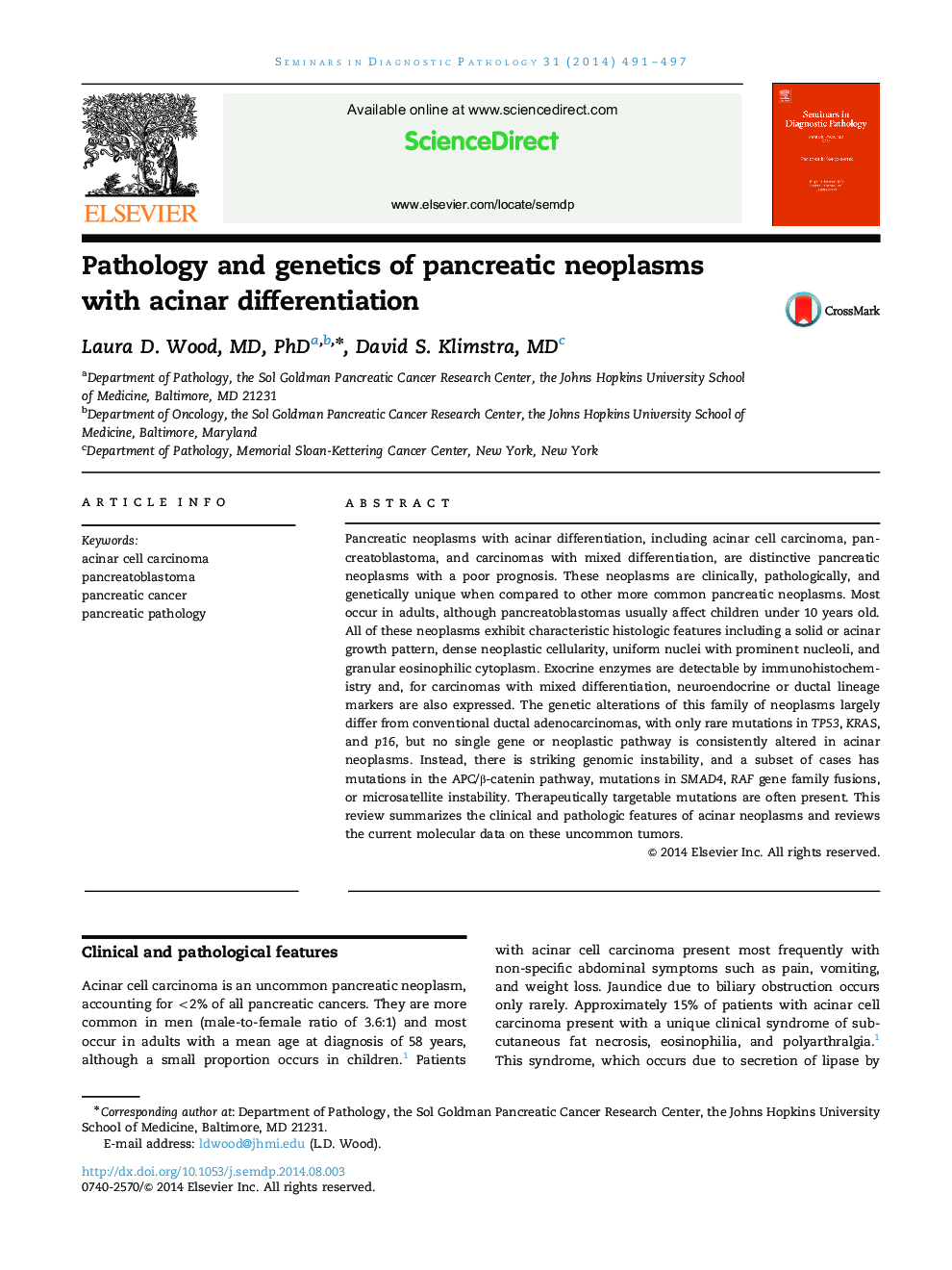| Article ID | Journal | Published Year | Pages | File Type |
|---|---|---|---|---|
| 4138224 | Seminars in Diagnostic Pathology | 2014 | 7 Pages |
Pancreatic neoplasms with acinar differentiation, including acinar cell carcinoma, pancreatoblastoma, and carcinomas with mixed differentiation, are distinctive pancreatic neoplasms with a poor prognosis. These neoplasms are clinically, pathologically, and genetically unique when compared to other more common pancreatic neoplasms. Most occur in adults, although pancreatoblastomas usually affect children under 10 years old. All of these neoplasms exhibit characteristic histologic features including a solid or acinar growth pattern, dense neoplastic cellularity, uniform nuclei with prominent nucleoli, and granular eosinophilic cytoplasm. Exocrine enzymes are detectable by immunohistochemistry and, for carcinomas with mixed differentiation, neuroendocrine or ductal lineage markers are also expressed. The genetic alterations of this family of neoplasms largely differ from conventional ductal adenocarcinomas, with only rare mutations in TP53, KRAS, and p16, but no single gene or neoplastic pathway is consistently altered in acinar neoplasms. Instead, there is striking genomic instability, and a subset of cases has mutations in the APC/β-catenin pathway, mutations in SMAD4, RAF gene family fusions, or microsatellite instability. Therapeutically targetable mutations are often present. This review summarizes the clinical and pathologic features of acinar neoplasms and reviews the current molecular data on these uncommon tumors.
